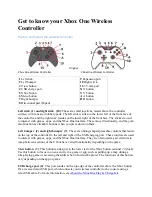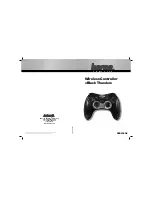
CHAPTER 5: SETTINGS
GROUPED ELEMENTS
M60 MOTOR PROTECTION SYSTEM – INSTRUCTION MANUAL
5-201
5
UNBALANCE BIAS K FACTOR
— Unbalanced phase currents cause rotor heating that is not shown in the motor thermal
damage curve. When the motor is running, the rotor rotates in the direction of the positive sequence current at near
synchronous speed. Negative sequence current, which has a phase rotation that is opposite to the positive sequence
current, and hence opposite to the direction of rotor rotation, generates a rotor voltage that produces a substantial
current in the rotor. This current has a frequency that is approximately twice the line frequency: 100 Hz for a 50 Hz system
or 120 Hz for a 60 Hz system. Skin effect in the rotor bars at this frequency cause a significant increase in rotor resistance
and therefore, a significant increase in rotor heating. This extra heating is not accounted for in the thermal limit curves
supplied by the motor manufacturer as these curves assume positive sequence currents from a perfectly balanced supply
voltage and motor design.
The thermal model can be biased to reflect the additional heating that is caused by negative sequence current when the
motor is running. This biasing is done by creating an equivalent motor heating current rather than simply using average
three phase RMS. This equivalent current is calculated using the following equation.
Eq. 5-12
where
I
eq
= equivalent motor heating current
I
per_unit
= per unit current based on FLA
I_1 = positive sequence current
I_2 = negative sequence current
k = constant
The following figure shows the motor derating as a function of voltage unbalance as recommended by the National
Electrical Manufacturers Association (NEMA). Assuming a typical induction motor with an inrush of 6 x FLA and a negative
sequence impedance of 0.167, voltage unbalances of 1, 2, 3, 4, and 5% equals current unbalances of 6, 12, 18, 24, and 30%
respectively. Based on this assumption, the amount of motor derating for different values of k entered for setting
UNBALANCE BIAS K FACTOR
is also shown. Note that the curve created when k = 8 is almost identical to the NEMA derating
curve.
Figure 5-103: Medium motor derating factor due to unbalance voltage
If a value of k = 0 is entered, unbalance biasing is defeated and the overload curve times out against the measured per unit
motor positive sequence current. The following equations can be used to calculate k.
Eq. 5-13
COOL TIME CONSTANT RUNNING / STOPPED
— The thermal capacity used value is reduced in an exponential manner when
the motor current is below the full load amps x service factor settings to simulate motor cooling. Enter the motor cooling
time constants for both the stopped and running cases. A stopped motor normally cools significantly slower than a
running motor.
Summary of Contents for M60
Page 9: ...TABLE OF CONTENTS M60 MOTOR PROTECTION SYSTEM INSTRUCTION MANUAL ix INDEX ...
Page 10: ...x M60 MOTOR PROTECTION SYSTEM INSTRUCTION MANUAL TABLE OF CONTENTS ...
Page 552: ...5 344 M60 MOTOR PROTECTION SYSTEM INSTRUCTION MANUAL TESTING CHAPTER 5 SETTINGS 5 ...
Page 660: ...iv M60 MOTOR PROTECTION SYSTEM INSTRUCTION MANUAL ABBREVIATIONS ...
















































